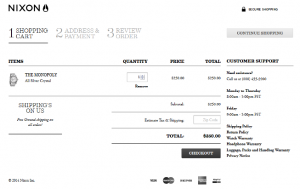— October 25, 2018

markusspiske / Pixabay
Be in the Know About the Competitive Field
Years ago, I competed in triathlons. Before each season, my husband, Mark (who also doubled as equipment manager and cheerleader), would ask, “What’s your idea of success this year?” The answer this question guided our race choices.
We would then evaluate the races on the schedule against two factors: my strengths (for example, long bike legs with lots of hills) and the potential competition. For each race that made the initial list, we researched that race’s previous years’ information for course, racers, and winner details. This additional information provided insight into what it would take to be competitive and who I most likely would be up against. Once we finalized the races, we would put together the training strategy and plan.
Whether you’re racing in triathlons or up against competitors for your products, this same type of rigor applies. You need to know your strengths, which markets and/or customers play to these strengths, what it will take to win, and who you will be competing with. It’s hard to bring your best game and win if you are not in the know about the competitive field.
In the case study Thorough Competitive Analysis Leads to Successful Shift in Business Strategy you can learn how one of our customers applied this approach. They used primary research to gather competitive intelligence to help improve their ability to more quickly close large new deals.
How to Get Smarter About Your Rivals
If you’re in a competitive market, and most of us are, then you need to gather competitive intelligence (CI). CI analysis provides insight into marketplace dynamics and challenges in a structured, disciplined method in order to inform your business strategy. CI enables you to develop counter moves, plan for future customer and market opportunities, benchmark your organization, and assess the effectiveness your positioning and messaging.
Start with these four steps to make sure your competitive intelligence efforts pay off with wins.
- Know what you need to know. Competitive intelligence (CI) gathering can be expensive, so as with any research effort, the first step is to determine what you need to know. Be clear about what you want to validate as well as learn about your competitors. For example, maybe you are trying to determine the unmet needs of your competitors’ customers in order to motivate these companies to switch. It is very likely you already know some facts about the competition: Make a list of what you think you know (for validation), and then a list of what you need to learn. To become smarter about your competition you should at least know the size, growth, profitability, objectives, strategies, positioning, key offerings, and target markets/segments of each of your primary competitors.
- Research is only valuable if it is actionable. Frame the research in a way that will help you make business decisions. For example, should you pursue a market fraught with competition? If so, what is your strategy? Perhaps there’s a need out there you’ve noticed that requires a whole new solution? If so, what are the customer specifications that will enable you to successfully compete? Acquire data that will help you assess your competitor’s capabilities and vulnerabilities to support the decisions made by Marketing, Research and Development, Customer Services, etc.
- Determine how you will collect the data. There are a variety of ways to acquire competitive intelligence. Is there valid secondary research available to fill the gaps? Can you harvest data from combing competitor websites, company reports, customer reviews, analyst market reports, trade show material, and other information in the public domain? If these options don’t yield what you need to know, then you need to determine the best approach for conducting primary research. Primary research requires determining the methodology, deciding on the study participants, creating the instrument, fielding the study, data coding and analysis, and synthesizing the findings into actionable insights and crafting the final report/presentation. It’s a science and an investment.
- Decide and Implement. Remember, the purpose of your research is to help guide your decisions and facilitate your success. Use the study findings to take action. One valuable way to employ your CI and use it to facilitate decisions is through a scenario analysis. Scenario analysis provides you with a way to estimate and anticipate each key competitor’s most predictable response to your action. Explore a scenario analysis working session as a starting point for your CI.
The Value of Competitive Intelligence
When done well, CI can help uncover unmet customer needs, identify new markets, and predict what a competitor is going to do. It can also help you stay abreast of trends and changes, or decide whether to invest in new product development. Gathering competitive intelligence is not a one-time project; it should be an ongoing process. The competitive landscape, market, customer requirements and trends continually change, so it is important to keep your CI and CI processes up to date.
Business & Finance Articles on Business 2 Community
(77)
Report Post






